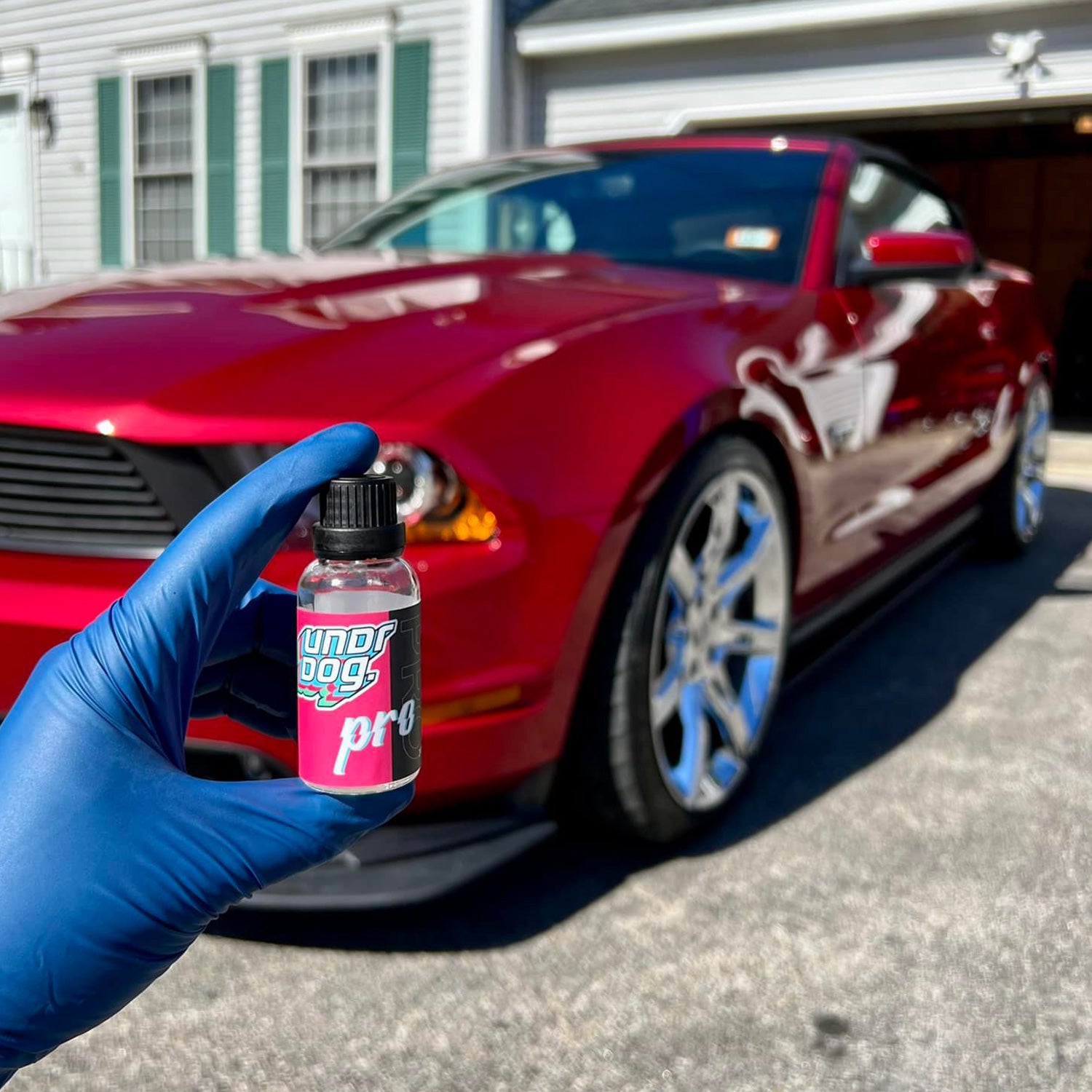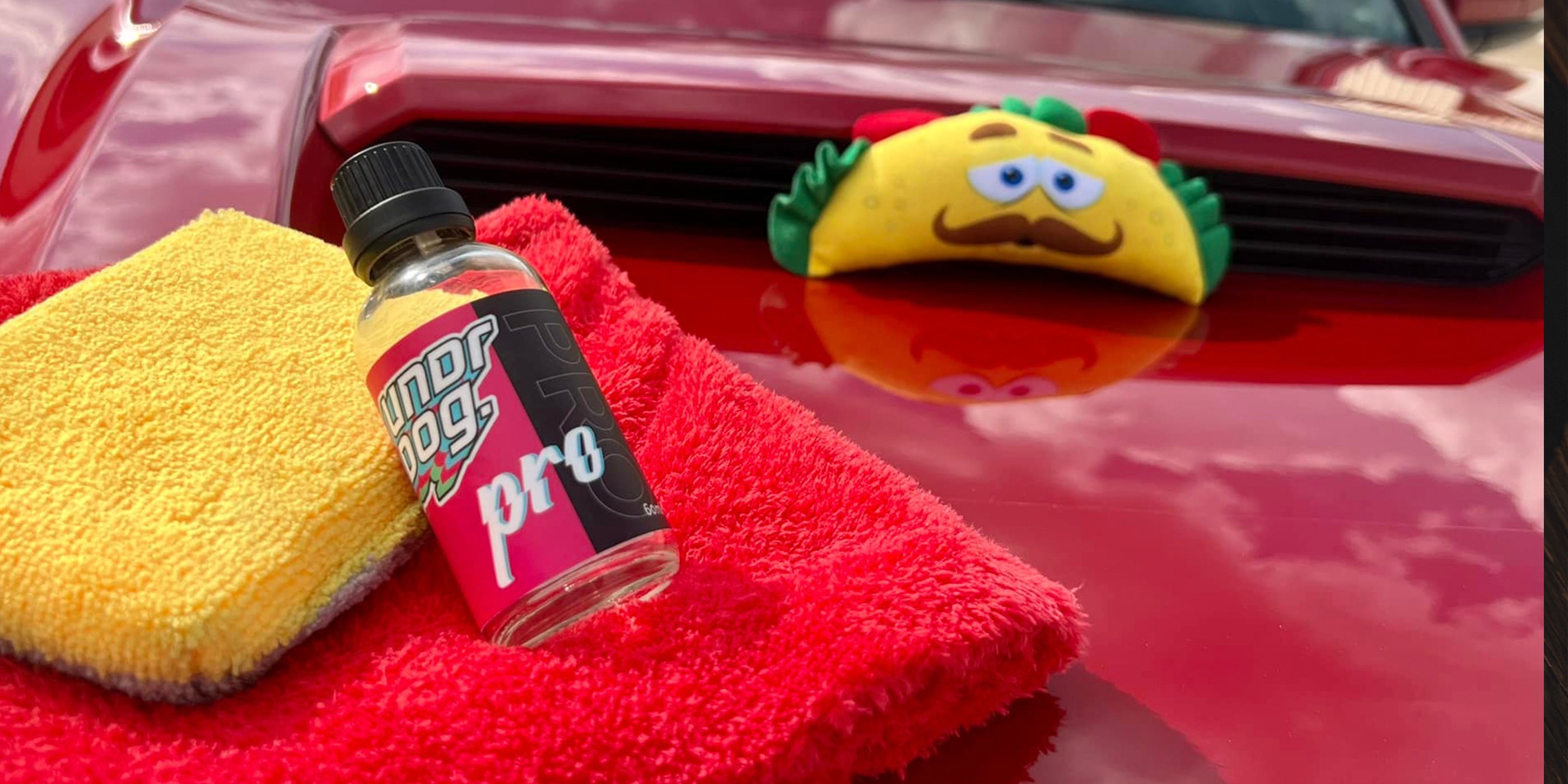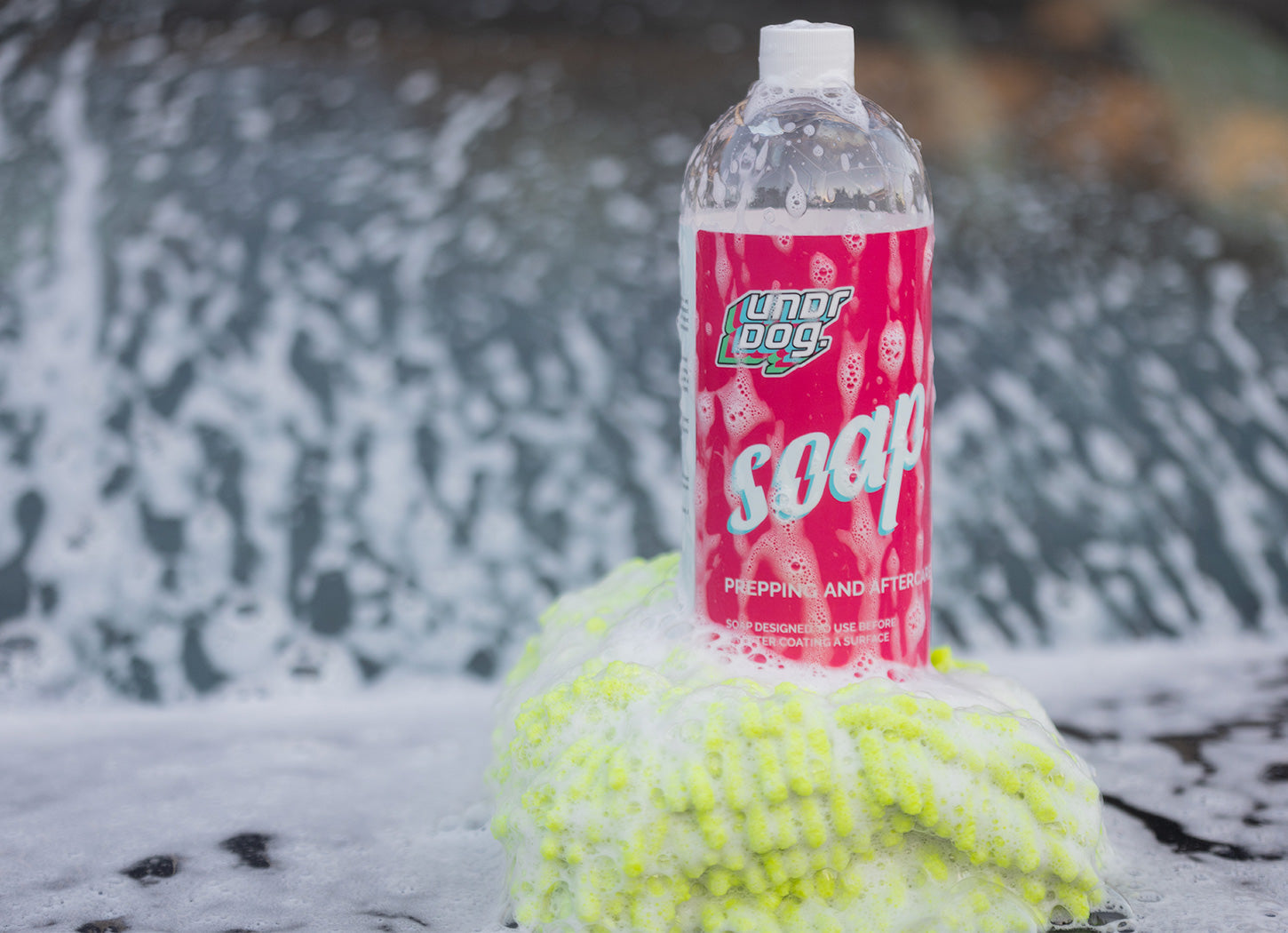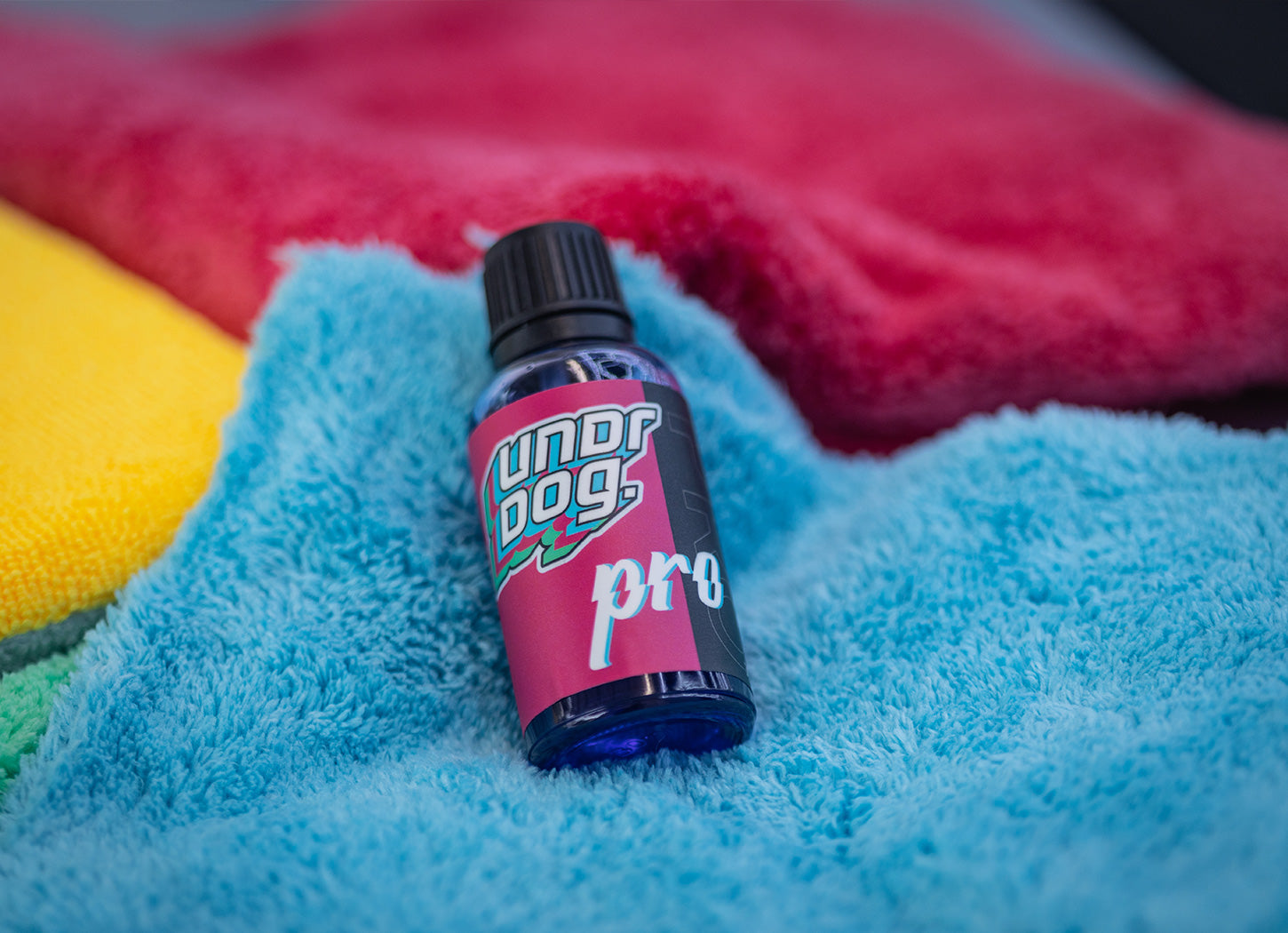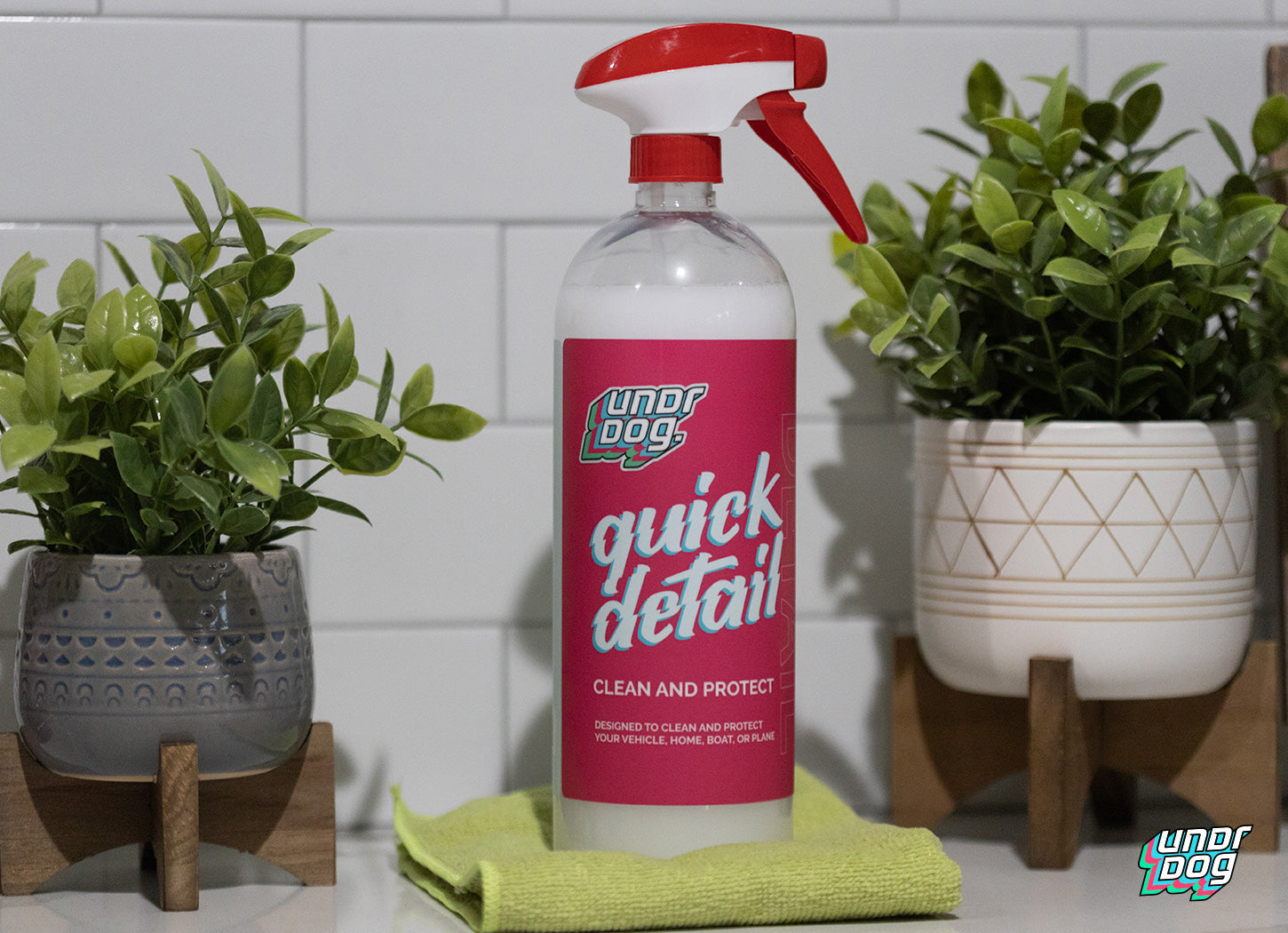It doesn't matter what kind of vehicle you have and how well you take care of it, cars just get dirty. The speed at which this happens depends on the environmental conditions, your driving habits, and your maintenance routine.
Driving in polluted urban areas, off-roading, parking outside, living in a dry, dusty climate, or a wet, rainy one - all affect how long your car can stay clean.
And cars are not just means of transportation. New or used, they’re an investment - one that’s well worth protecting.
The easiest way to protect your vehicle, enhance its appearance & performance is by sticking to a regular cleaning schedule. Frequent car washes will keep the dirt and grime away, making your ride look like new for longer.
However bear in mind that improper washing, without the right products and techniques, won’t get you that ultra-clean look you’re after. Plus, you risk damaging the delicate surfaces of your car!
Not all washing methods and products are created equal.
By far the safest and most effective car-washing method is hand washing. And by that, we don’t mean grabbing a bucket of water, dish soap, & old sponges, and scrubbing away.
Proper hand washing is a technique that includes 5 steps: prep, pre-wash, washing, rinsing, and drying. This might sound like too much of a hassle, but trust us - it’s not. In fact, it can be a therapeutic experience!
To make it easy on you, in this article we’ll walk you through all of the steps. By the time you’re done reading, you’ll be equipped to wash your car like a pro.
Oh, and please don’t try to cut corners using household cleaning products on your beloved ride! These chemicals can seriously damage your paint job. Instead, go for a car shampoo that is specifically designed for use on vehicle paints and finishes.
The right soap for your car should be chosen with care.
Car Washing is More Important Than You Think
Too many car owners are guilty of delaying washing their vehicles.
If it was just a matter of appearance (and confidence!) this wouldn’t be a big of an issue. However, there are many other reasons why regular car washing is important.
Let’s take a closer look at some of them.
Safety

Poor visibility increases the risk of a crash by 30% or more. Thus, the most important element of safe driving is, without a doubt, having clear visibility.
If you can’t see properly, you can’t drive properly.
Having the middle of the windshield cleared by wipers isn’t enough to ensure safe driving. You need 360-degree visibility, meaning all glass surfaces including the windshield, side, and rear mirrors, need to be as clear as possible. Even the smallest coat of dirt can endanger the life of your passengers, other drivers, and yourself.
Don’t forget the headlights! Clean headlights allow for maximum illumination - a must for driving at night or in poor weather conditions.
Dirty tires are also a safety concern because only when they are clean, do tires allow enhanced braking and better traction. This helps you stay in control of your vehicle, preventing accidents. Plus, dirt is abrasive. If you neglect your tires for a while, it will start eating away at the metal.
Washing your car on a regular basis will help keep dirt from building up and causing visibility problems, ensuring a safe drive when you’re on the road. Plus, frequent washing means that you will stay a step ahead of any potential car maintenance issues.
Fuel Efficiency

If you are at all familiar with aerodynamics, you won’t be surprised to hear that clean cars technically achieve better fuel efficiency and help reduce the carbon footprint.
This is because a clean car has a smooth surface that allows smooth gliding through the air at any speed. On the other hand, the rough surface of a dirty vehicle creates more resistance which increases with the driving speed.
So to get better gas mileage in your car, clean it regularly. You don’t want the dirt and debris stuck to its surface to limit airflow and increase friction!
Damage Prevention

Cars come into contact with a lot of debris on the road. The thing is, dust, dirt, salt, mud, tar, tree sap, bugs, bird droppings, and other contaminants can seriously damage your vehicle.
We’re not talking just aesthetics here, like your paint fading and losing its shine.
If these deposits remain unwashed for a longer time, they can cause scratches and chips. Eventually, they’ll eat away at the clear coat, the paint, and even the metal underneath.
Keeping your car as clean as possible at all times is the easiest way to prevent this from happening.
A good rule of thumb is: wash your vehicle as soon as you notice it getting dirty.
Summer Protection
Most people enjoy summer - the sunshine & warm weather. Yet prolonged exposure to UV (ultraviolet) rays can be very damaging to our skin. To protect it, we resort to sunscreen.
These powerful rays also take a toll on automotive paint. They can cause oxidation, paint peeling, and fading, making your new car look old and worn.
The damage done is accelerated if the vehicle’s surface is contaminated. Over time, the debris weakens the clear coat, allowing UV rays to penetrate.
Now, sunscreen for cars isn’t a thing, but you can protect your ride using a coating with sun-blocking properties. Paired with a gentle wash every two weeks, this can significantly reduce the potential paint damage caused by UV radiation.
Winter Protection
Car care should be prioritized even more in the winter, especially if you live in a cold Northern climate.
Road salt prevents accidents on icy roads, but it also causes long-term damage to vehicles. As you drive, it gets flicked up underneath and on the sides of the car. If you allow the salt to remain there for some time, it starts eating away at your vehicle.
Rust on cars can be very difficult and expensive to remove. It appears when materials that contain iron are exposed to moisture. This is why a lot of people mistakenly believe that rust can be caused by car washing.
The truth, however, is completely different.
Not washing your car leads to dirt accumulation, which then holds chemicals and water in contact with the surface of the car, hastening deterioration. To avoid or at least mitigate any long-term corrosion of your vehicle, frequent washes are the way to go.
Resale Value

We know you love your car, but a day will come when you’re in the market for a new and improved one.
This means that sometime in the future you’ll want to sell or trade in the vehicle you have now. To get a higher price for it, it’s imperative that you maintain it well.
Think about it. When you’re buying a car, you check if it looks good outside, inside, and under the hood - and the same goes for prospective buyers of your vehicle.
If your car is in a bad condition, you might not even be able to sell it! On the other hand, if you keep it neat, you can sell it whenever you want. Plus, cars with the original coat of paint in pristine condition always get a better asking price and get sold quicker in dealerships.
Do your future self a favor - stick to your car wash schedule. Regular washes will help prevent paint fade, scratches, rust, and other issues that will take away from the resale value of your vehicle.
Appearance

Okay, we did say that appearance and confidence aren’t the most important reasons for frequent car washes, but they do matter to a lot of us!
The state of a vehicle says a lot about the owner’s personality. A spotless, shiny car demonstrates that you are responsible and can be trusted, which leaves a good impression. Conversely, a dirty, neglected ride suggests a lack of care and irresponsibility, making you seem unreliable and unattractive. Plus, nothing compares with the feeling of pride and accomplishment you get from driving around in a squeaky-clean car.
As debris accumulates on your vehicle, it dulls the finish and wears it off over time. To preserve the paint & clear coat and keep your ride nice & shiny, simply give it a regular gentle wash.
Well-being

According to research, more than 70% of people feel attached to their cars, and 36% consider their vehicle an old friend. According to study participants, how the vehicle looks is one of the most common reasons to bond with an automobile.
It’s common to experience an increased sense of well-being right after getting in a freshly cleaned vehicle - it makes us feel better about ourselves! This is because a tidy space does wonders for the mind. It helps to relieve stress & anxiety, boost performance, and increase energy levels.
Much like your home, you feel better when your car is clean.
Car Washing Methods
Contact Drive-through

Automated car washes are widely available, affordable, quick, and simple to use. They’ve been around for a long time, and most of us have used them at some point in our lives.
Nowadays, traditional drive-through car washes have a bad reputation - and for good reason.
They employ abrasive brushes that essentially do more harm than good. Particularly stiff bristles, especially if not properly maintained, cause micro scratches on your vehicle’s clear coat and paint. On top of that, contact drive-through washes generally use cheap cleaning agents that contain harsh chemicals which too erode your car’s surface.
Soft touch car washes are a great improvement compared to traditional ones. These facilities employ strips of fabric that dangle down from an oscillating mount, removing the dirt and grime as your vehicle moves through.
Still, soft-touch car washes run a fairly high risk of causing swirl marks too. The cloths used are often improperly cleaned, meaning they hold onto contaminants from previous washes which then scratch the vehicle’s clear coat.
Touchless Drive-Through

So, contact drive-through washes are a bad idea if you want to keep your car looking new. Still, there’s no denying the convenience they offer. Most of us have very busy lives and don’t have the time, energy, or desire to bucket wash our cars.
Luckily, we get to enjoy the wonderful perks of technology.
One of them are touchless drive-through car washes - a great alternative to contact drive-thrus for an occasional quick clean.
These facilities are also fully automated but use no applicators when cleaning. Instead, they employ high-pressure hoses to both soap and rinse, using sensors along the tunnel to detect the vehicle’s shape. To make up for the lack of contact, touchless car washes utilize stronger chemicals to achieve satisfying results.
The most obvious benefit of a touchless wash is the reduced risk of fine scratches caused by applicators. Plus, a high-pressure wash can help clean off the mud and debris collecting on your undercarriage.
Yet, because modern cars come in a great variety of shapes and sizes, it’s impossible for the hoses to reach every nook and cranny. This means that touchless washes don’t produce optimal results. Your car will generally be fairly clean, but you’ll probably notice parts that require cleaning by hand afterward.
On top of that, automotive paint is delicate. The frequent use of harsh chemicals paired with high-pressure hoses will gradually wear down the clear coat and cause significant damage. Plus, automatic drying doesn’t always perform well and might lead to water spots.
Bucket Washing by Hand

If you want only the best for your ride, you’re going to have to get wet.
Hand washing is the ultimate way to clean your vehicle. It allows you to be thorough and gentle, ensuring that every hard-to-reach spot is cleaned and that your paint preserves its integrity and longevity.
Automated car washes are fairly cheap, but hand washing is cheaper. You might argue that supplies and water cost just as much, but that isn’t the case. You only need a couple of buckets of water for one wash, and the car soap you buy will last you months upon months. Plus, you get to inspect your ride in detail and uncover small defects you can fix right then and there, potentially saving lots of money in the long run.
Additionally, if done right, the act of cleaning your car can help bump up the production of endorphins, the feel-good neurotransmitters in the brain. You’ll be outside, enjoying the fresh air, instead of binge-watching your favorite TV series all weekend long. Plus, at-home car washing is a great teaching opportunity and a fun activity for the kids!
Benefits of Hand Washing
- most thorough cleaning
- paint damage prevention
- timely maintenance checks
- reduction in recurring expenses
- Improved health and wellness
Let’s go through the proper washing technique step-by-step.
Washing Technique
Hand washing seems pretty straightforward, right?
Well, yeah. It’s pretty easy, and with the right supplies, takes less than an hour. However, there are things to watch out for so you don’t accidentally degrade the finish and cause swirls & scratches.
In this section, we’ll walk you through prep, pre-wash, washing, rinsing, and drying. Follow these steps to get a squeaky clean ride every time.
Prep
The first step is preparing yourself and everything you will need so it’s within reach while you wash.
Put on clothes you don’t mind getting wet and throw on non-slip shoes. Then, gather your supplies and place them near the vehicle. You’ll need 3 buckets, a hose, sponges or wash mitts, microfiber towels, car soap, and a wheel brush.
Read the dilution instructions on the bottle of your car soap and fill up two buckets with soapy water. These are the washing buckets - one for the body of your car, and one for the wheels. Lastly, fill the third bucket with clean water for rinsing.
Pre-wash
This is a step that often gets skipped, but it’s vital for achieving that showroom finish.
Pre-washing allows you to remove loose dirt and contaminants from the paintwork before you begin washing. If you don’t do this, the debris will get caught in your mitt later on causing swirls & marring.
Use a hose or pressure washer with a foam cannon and start from the top, working your way downward. Pay close attention to tight spots that may trap dirt: panel gaps, girls, window rubbers, fuel filler caps, wheel arches, door shuts, etc.
Washing
Wheels & Tires
The first part of your car you want to wash is the dirtiest one.
Dip the wheel brush into a bucket of soapy water and agitate. Don’t scratch, and ensure the chemical you’re using is safe for your rims. When you’re done with the first wheel, rinse thoroughly before you move on to the next one.
Remember: separate the bucket of soapy water you’ll use for wheels from the one meant for the body of your car.
Two-bucket Wash
Now it’s time to tackle the rest of your car.
Wash the car section by section, starting at the top. Saturate the sponge or mitt in the car shampoo solution and sweep backward and forward applying light pressure. Never increase the pressure - stubborn marks may just need extra time.
When you're ready to reload your sponge or mitt with soapy water, rinse it thoroughly in the clean water first. When it starts getting opaque or gritty, dump it out and fill it with fresh water. To keep this from happening often, consider a grit guard. This piece of plastic sits at the bottom of your wash bucket and captures particles & contaminants, leaving clean water at the top.
Continue working around the car until every panel is washed, saving the lower parts of the doors, the boot lid, and the rear bumper for the end. If you’re washing your car on a hot, sunny day, make sure you rinse every panel thoroughly as you wash it so the soap doesn’t dry on the surface.
Rinsing
Once you’ve cleaned the whole thing, give it a final rinse. As with the previous two steps, work from top to bottom - and don’t forget the wheel wells.
Use a hose or a pressure washer set to give a steady stream of water. This will allow the water to sheet off your panels, making the drying process easier and quicker.
Then, check your car again for any missed spots. If you need to, use your soapy mitt or sponge to go over any area again and rinse it off well when you’re done.
Drying
Finally, it’s down to drying.
To prevent the occurrence of water spots, never let your car air dry. Use fresh microfiber towels or a terry cloth that won’t scratch the paint.
Work all panels top to bottom, patting the surface dry instead of dragging the towel over the paint. Check all the crevices to make sure there is no water left, and you’re done!
If you want to speed up the drying process, use Quick Detail spray as a drying aid. Spray it onto a panel or a microfiber towel and dry as you normally would. It will produce a smoother feel while drying and a glossier finish when you’re done. You can also resort to a car dryer or a squeegee but that’s not something we recommend. Both of these can damage or weaken the paint. Nevertheless, if you’re in a pinch with time or just impatient, you can give them a go at your own risk.
How to Use Undrdog Soap
There is an absolute abundance of car wash soaps on the market and they’re not all created equal.
Developed by car enthusiasts, Undrdog Soap is different from any other car wash. Its unique formula is designed to give you luxurious foam, the smooth wash finish of shampoo, and the slickness of a conditioner. Plus, it’s compatible with all the different types of protective coatings and helps maintain their durability.
What you need:
- Wash Bucket or Foam Cannon
- Car Washing Sponge or Mitt
- Clean microfiber towel
Step by step:
- Use 1 oz of our Soap per wash bucket or foam cannon and fill up with warm water (approximately 1 oz per every 1 - 1.5 gallons). More soap = More foam.
- Wash as normal with a foam cannon or by hand using a sponge.
- Dry the surface with a clean microfiber towel.
For information on product usage, check out this article. To get answers on frequently asked questions about Undrdog boat & car soap, check out this one.
When to Use Undrdog Soap
How often you need to wash your vehicle totally depends on the wear and tear it experiences and how well you take care of it, as well as personal preference.
There are a lot of factors that come into play when it comes to determining the best car washing schedule for you. For instance, those that live in rural areas where there are a lot of dirt roads, as well as birds and insects, might need to wash more often. The same goes for people who often park in the open, leaving their vehicle exposed to sun, snow, rain, dust, salt, and pollution.
As a general rule of thumb, you should wash your daily driver every two weeks - ideally every week. This will ensure that all the contaminants get removed before they have the chance to damage your clear coat and paint.
Note: Don’t worry about washing too often! What damages cars isn’t frequent washing, it’s improper washing and using unsuitable tools - rough sponges, stiff brushes, and harsh chemicals.
And stick to your washing schedule during the winter. If you live near the ocean or somewhere with a lot of snow, try to wash even more frequently (once a week minimum) and pay attention to your undercarriage. This will prevent salt buildup that can wreak havoc on your ride - just make sure that the temperature is over 40 degrees so the water doesn’t freeze.
Where to Use Undrdog Soap
Undrdog Soap is suitable for all types of automotive and marine applications - bikes, motorcycles, cars, trucks, RVs, boats - you name it!
When washing, try to find a shady spot. This is especially important if it’s very hot, if you’re washing immediately after driving or if the car has been parked in direct sunlight for a while. Heat speeds the drying of soap and water, making the washing process more difficult and increasing the risk that spots or deposits will form.
Another thing to consider is the surface you’re washing on. Washing your car in your driveway is illegal because it’s bad for the environment. This is because all the soap, road muck, traces of exhaust residue, motor oil, and gas run unfiltered into the nearest storm drain and flow into local waterways. Instead, choose a surface that absorbs water, like gravel or grass.
Why You Need Undrdog Soap in Your Workshop and Tool Kit

Eases wax & grease removal: Undrdog Soap is a highly concentrated cleaner that easily cuts through thick dirt & grime to keep your vehicle looking its very best.
Improves coating longevity: Our Soap enhances the durability of protective coatings by removing dirt and contaminants that interfere with the bonding process.
Foam for days: This is no ordinary soap. No matter if you’re using a wash bucket or a foam cannon, it will give you the most luxurious car wash experience possible!
Shine & slickness: Undrdog Soap has a unique formula that gives you the smooth wash finish of a shampoo, along with the slickness of a conditioner!
To Sum Up
Whether your car is old or new, leased or bought - it’s an investment worth looking after. The easiest and cheapest way to protect it is by giving it a good old hand wash every two weeks.
If proper handwashing sounds like too much of a hassle or you have a super busy schedule, get in touch with a local car wash that does mobile hand washes. As a quick fix, you can resort to a touchless car wash every now and then.
And yeah, it’s normal to get off track with your car cleaning schedule from time to time. Just make an effort to get back on it as soon as you can!
